Underwater Treasures of the High Seas
Unique habitats and biodiversity could be protected with a new U.N. agreement
Once thought to be largely barren, the high seas are now known to be one of the planet’s largest reservoirs of biodiversity. Home to majestic whales, sharks, sea turtles, and other beloved and ecologically important species of marine life, the deep reaches of the high seas also support little-understood plants and animals as well as creatures not yet discovered.
Covering nearly two-thirds (64 percent) of the ocean’s surface, the high seas fall outside countries’ exclusive economic zones, so they are therefore beyond national jurisdiction. These areas have significant economic value: It is estimated that high seas fisheries account for up to US$16 billion in gross catch annually—just one example of their many benefits.1 Despite their value, the high seas remain inadequately protected. They are governed only by a patchwork of international, regional, and sectoral agreements that lack the coordination to protect and conserve their immense but fragile biodiversity.
In June 2015, the United Nations General Assembly agreed to move forward and try to fill this management gap by developing a new international treaty for the conservation and sustainable use of marine biodiversity in areas that lie beyond national jurisdiction.2 Among the elements of this potential instrument under the United Nations Convention on the Law of the Sea are area-based management tools, including marine protected areas.
MPAs, especially fully protected reserves, help to safeguard biodiversity by providing protection for vulnerable species and valuable habitats and boosting ecological resilience against environmental stressors.
Through a scientific and technical process launched under the Convention on Biological Diversity (CBD), parties have considered a number of ecologically or biologically significant marine areas (EBSAs) on the high seas that need enhanced conservation and management. This document highlights a few of the EBSAs found on the high seas, which include species and habitats that could benefit from the area-based management tools being discussed as part of the agreement under negotiation at the United Nations. This representative and geographically diverse group of special places illustrates the many reasons that different areas may warrant global conservation measures on the high seas.
Representative High Seas EBSAs That Could Benefit From Area-Based Management Tools, Including MPAs
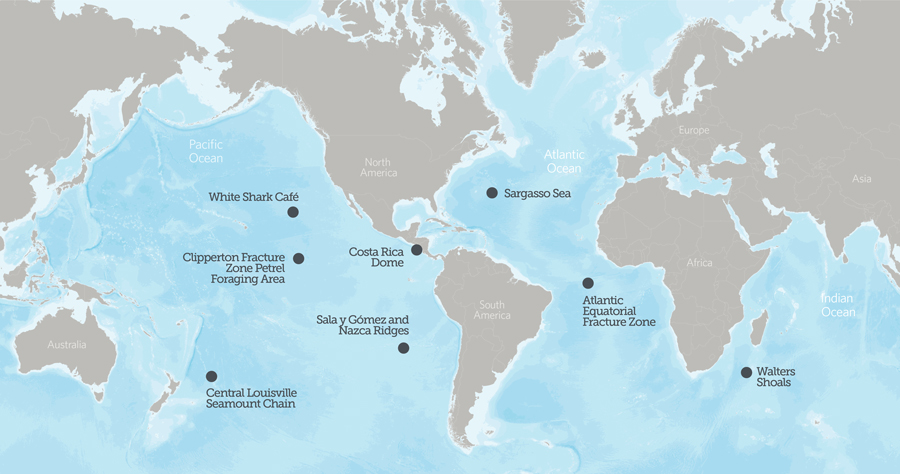
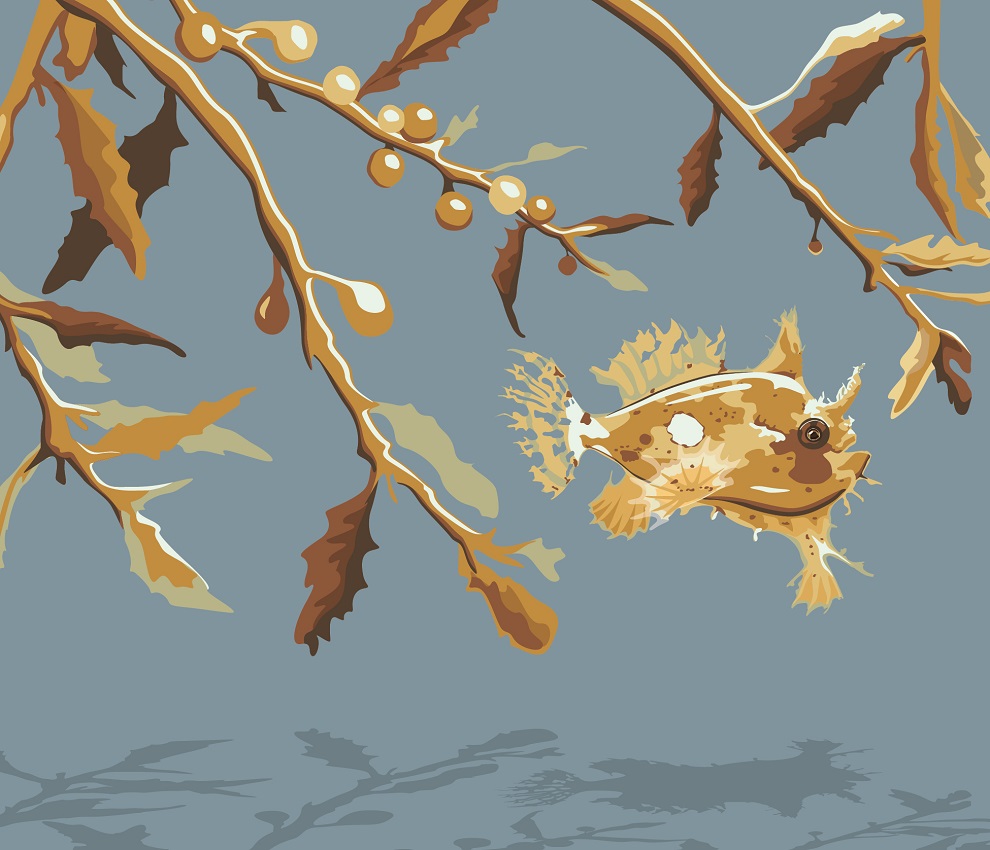 © The Pew Charitable Trusts
© The Pew Charitable TrustsSargasso Sea
At some point in their lifetime, 100 species of invertebrates, 280 species of fish, and about 23 types of birds use the sea’s sargassum for protection, food, spawning, or nursery habitat.
While there may be more dramatic seascapes than large rafts of floating seaweed, few places in the world can compete with the Sargasso Sea for ecological importance. Named for sargassum, the type of seaweed floating upon it, the Sargasso Sea is a gyre lying at the center of the Atlantic Ocean, bounded by currents rather than coastline.3
At some point in their lifetime, 100 species of invertebrates, more than 280 species of fish, and some 23 types of birds use the sea’s sargassum for protection, food, spawning, or nursery habitat.4 These include 10 endemic animal species found nowhere else on the planet, such as the sargassum angler fish, which has camouflage uniquely adapted to these floating forests.5 Other migratory species like tuna and marlin feed off the diverse communities of smaller organisms living in the sargassum, making the Sargasso Sea critical to the continued productivity of many commercial fisheries throughout the Atlantic. In fact, the value of these commercial fisheries is estimated at approximately $100 million per year.6
This high seas area serves as an incubator for much of the Atlantic’s marine life, with impacts extending far beyond the sea itself. Yet the Sargasso Sea faces substantial and increasing human pressures. Fishing, maritime traffic, the introduction of invasive species, marine debris, and other forms of accidental and intentional pollution all contribute to the disruption of the area’s vital ecosystem services. Many of the species that live in or pass through the sea are considered threatened, or near threatened, by the International Union for Conservation of Nature (IUCN). These include European eels, which are thought to spawn in the sea’s southern reaches before migrating back to European waters, and which constitute an important fishery estimated at $66 million per year;7 they are now classified as critically endangered by IUCN.8 The same is true for several species of sea turtles, which take refuge in sargassum rafts as hatchlings. These sea turtles, and the whales migrating through the area, have been shown to be economically valuable for the tourism industries in the Atlantic and the Caribbean.
But some commercial fishing vessels use purse seine nets near floating objects like sargassum rafts, which has led to increased bycatch levels of turtles, eels, and other species relying on the Sargasso Sea as a safe haven. And there is no management plan in place to regulate the harvest of sargassum, despite its increasing use in commercial applications, such as pharmaceuticals, biofuels, and livestock feed.
While the sea surrounds and includes the waters of Bermuda, most of it lies beyond areas of national jurisdiction. Protections under the high seas treaty could help to pave the way toward a sustainable future with economic benefits for this valuable region.
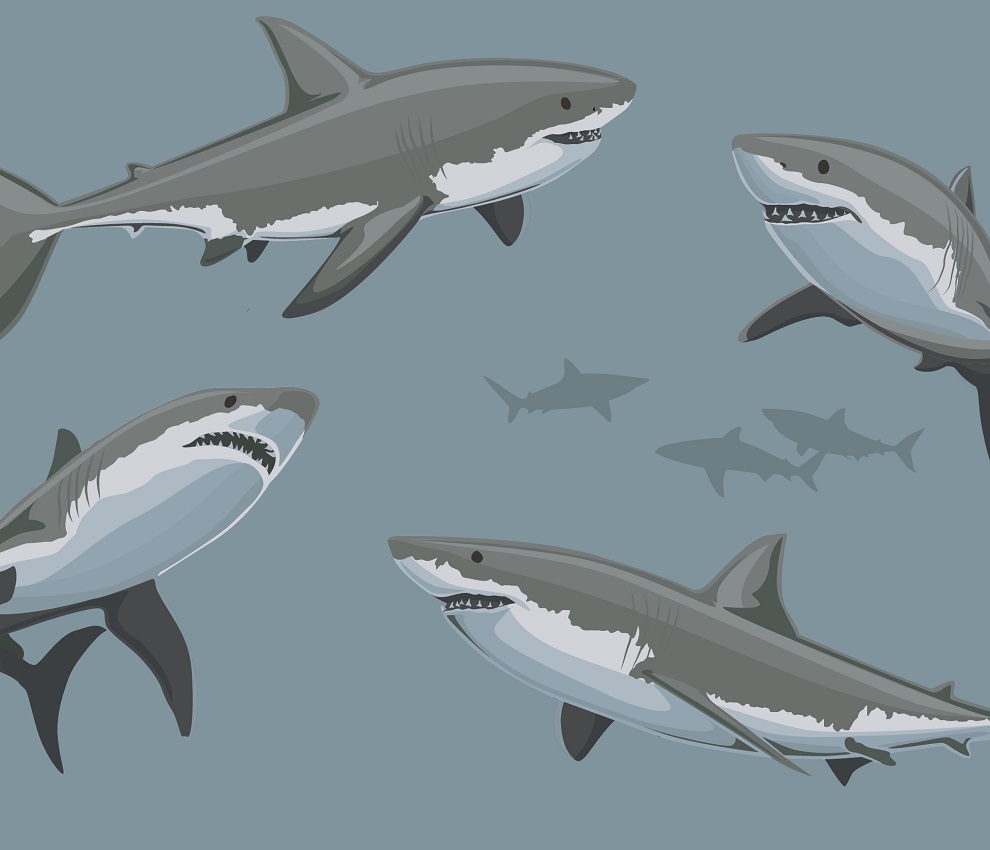 © The Pew Charitable Trusts
© The Pew Charitable TrustsWhite Shark Café
Great white sharks are top predators that play a critical role in the marine ecosystem, and they are threatened.
In the international waters of the Pacific Ocean, halfway between the Baja Peninsula and Hawaii, lies the White Shark Café. Tracking studies have shown that great white sharks (Carcharodon carcharias) leave the coast of California or Mexico and migrate to this offshore pelagic—or open ocean—habitat, where hundreds of sharks congregate from spring through fall each year, particularly from April through July.
The sharks’ specific use of this patch of ocean remains unclear, but certain underwater features suggest that it may provide an opportunity for greater foraging.9 Spawning squid may be attracting either the great whites or their prey during peak aggregating periods.10 The area may also provide key habitat for mating, as studies have also noted that male sharks are found more centrally within the Café, while females are spread more broadly. This pattern is consistent with mating in other migratory systems.11
Great white sharks are top predators that play a critical role in the marine ecosystem, and they are threatened. Globally, they are listed as vulnerable by the IUCN, and they are also listed on Appendix II of the Convention on International Trade in Endangered Species of Wild Fauna and Flora (CITES) and Appendices I and II of the Convention on the Conservation of Migratory Species of Wild Animals (CMS). The population found in the Café is a genetically distinct great white population, in part because these sharks return to this area.12 With this population estimated to be only a couple of hundred individuals, protecting them before it is too late is critical.
Although these sharks spend a lot of time in the waters of the United States and Mexico, these particular international waters are a unique area and critical for the adult white sharks that breed and feed there, which are also in need of protection from threats such as shipping and fishing.
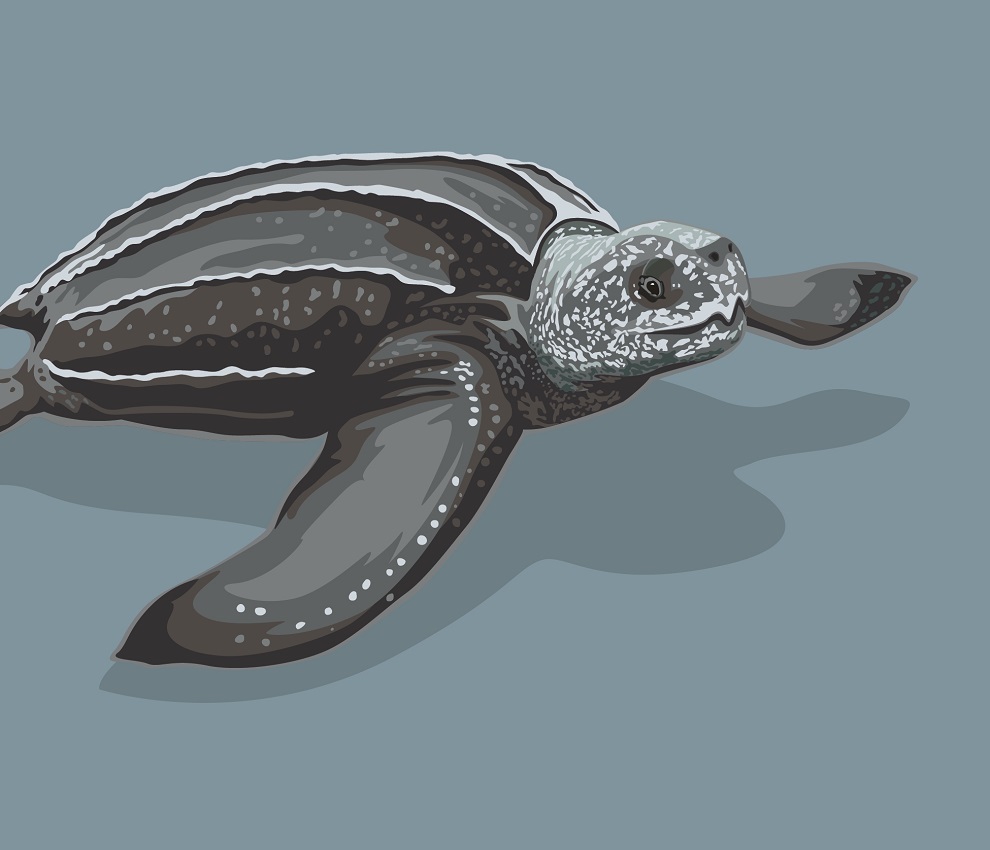 © The Pew Charitable Trusts
© The Pew Charitable TrustsCosta Rica Dome
The unique makeup of the dome is responsible for the vitality, strength, and overall health of significant populations of migratory species.
Nestled in Central America’s eastern tropical and temperate Pacific Ocean, the Costa Rica Dome is an exceptional and ever-changing part of the high seas that is home to some of the ocean’s most threatened species. The dome is formed through a unique interaction between surface winds and ocean currents. Although its mean position is consistently near 9 degrees north and 90 degrees west, it is actually a thermocline—the shifting boundary between the warm surface and the deep, cold water—that creates the dome.13 And while other thermoclines exist in tropical regions, this is the only one formed in part by a coastal wind jet, which generates the upwelling of deep, nutrient-rich waters, transforming the region into a highly productive area and a feeding ground that supports its immense biodiversity.
In particular, the Costa Rica Dome contains an enormous amount of phytoplankton and zooplankton, attracting many of the ocean’s most iconic species here to feed and breed. Predators such as tuna, mahi-mahi, billfish, sharks, squid, dolphins, and cetaceans migrate through the region, and endangered sea turtles swim through the dome after nesting on the beaches of Costa Rica.
The area is also important to endangered blue whales, which migrate south during the winter to breed, calve, raise their young, and feed.14 According to the IUCN, blue whales have been endangered for more than 20 years.15 Although the species has been protected since 1966, threats from shipping and commercial fishing continue to imperil some whales along their migratory journeys.
While the dome is not in a fixed location, its unique makeup is responsible for the vitality, strength, and overall health of significant populations of migratory species. Additionally, the dome is responsible for generating economic benefits for many Central American countries. In 2009, the fishing industry in the region reaped approximately $750 million,16 and tourism produces millions of dollars from whale and dolphin watching, visits to sea turtle nesting sites, and sport fishing trips. Marine spatial planning and area-based management, including marine protected areas, could ensure that during important seasonal migrations or times of increased feeding or breeding by specific species, populations are kept safe as they journey across this part of the ocean.
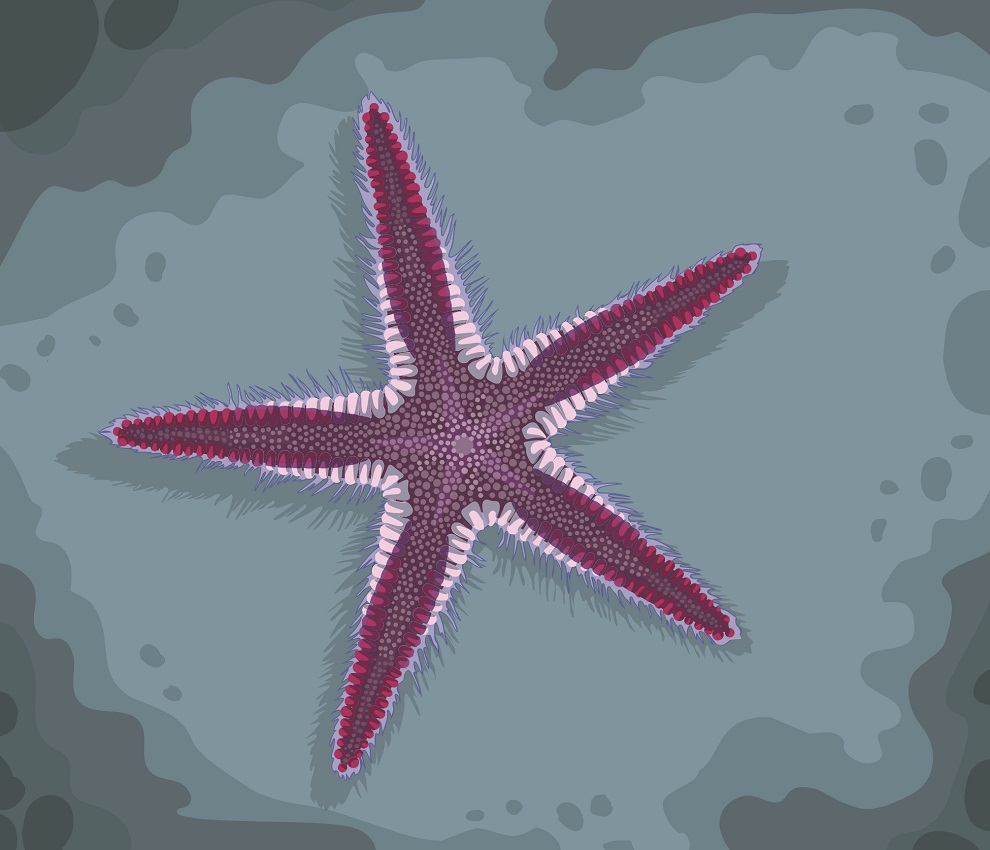 © The Pew Charitable Trusts
© The Pew Charitable TrustsSala y Gómez and Nazca Ridges
The Sala y Gómez and Nazca Ridges connect for nearly 3,000 kilometers and contain one of the world’s highest levels of endemic marine biological diversity
Beneath the Southeastern Pacific Ocean lie adjoining submarine mountain ranges containing about 110 seamounts and representing some 41 percent of the seamounts in the entire region.17 The Sala y Gómez and Nazca Ridges connect for nearly 3,000 kilometers (over 1,860 miles) and contain one of the world’s highest levels of endemic marine biological diversity. With about 80 percent of the oceans uncharted by humans, the true number of species within the high seas area is unknown, and many undiscovered species may depend on these underwater mountains for survival.18 While part of this region lies in Chilean waters and has some protection taken by the Chilean government, action is still needed on the high seas.
Of the species that live, feed, and breed here, many are threatened megafauna, such as blue whales or leatherback turtles. Swordfish also use the area as a nursery, and the overexploited Chilean jack mackerel uses the ridges as a key breeding ground.
The area has remained a refuge for the species that call it home. To date, only very localized and sporadic extractive activities have taken place, leaving many of the seamounts pristine. With so many features not yet explored, the Sala y Gómez and Nazca Ridges are prime candidates for improved protections to ensure that the area remains a hotbed of biodiversity—for the species we already know about and for those yet to be found.
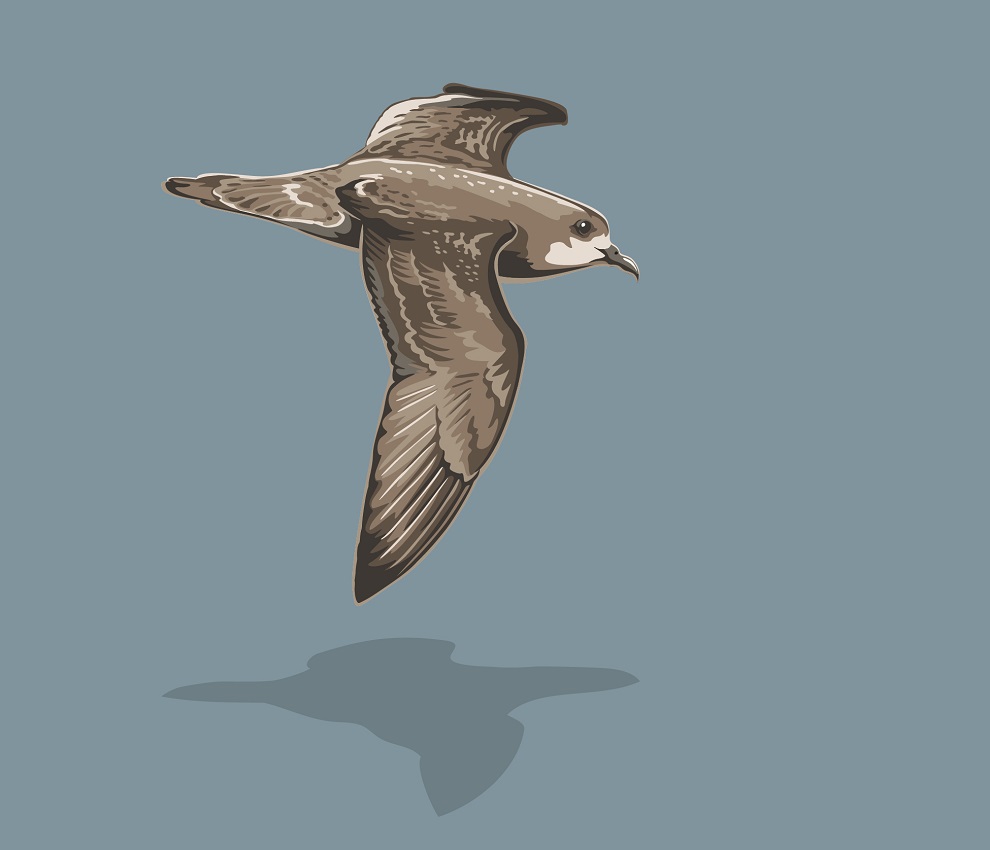 © The Pew Charitable Trusts
© The Pew Charitable TrustsClipperton Fracture Zone Petrel Foraging Area
This mountainous trench is an important bird area due to the huge number of threatened birds—including enormous numbers of petrels—relying on it for food.
About 50 percent of the population of Pycroft’s petrel, a species considered vulnerable by the IUCN, travel through the Clipperton Fracture Zone Petrel Foraging Area of the east-central Pacific Ocean to forage during their nonbreeding months of July through October.19
The Clipperton Fracture Zone Petrel Foraging Area’s underwater, mountainous trench is an important bird area due to the huge number of threatened birds relying on it for food. While other birds come to the area to forage, its importance to numerous petrel species—including Gould’s, Cook’s, and the black-winged petrel—is responsible for its name.20
The petrels and other birds visiting the area most likely come for the abundance of prey, such as crustaceans and squid. Increased fishing in the area could have an impact on the birds’ ability to feed, and seabirds are often killed in fishing gear as accidental bycatch. Mining in the area could also pose a threat to the ecosystem in the future.
Area-based management of the region could ensure that petrels and the other birds depending on the high seas for prey are protected, particularly during peak foraging times.
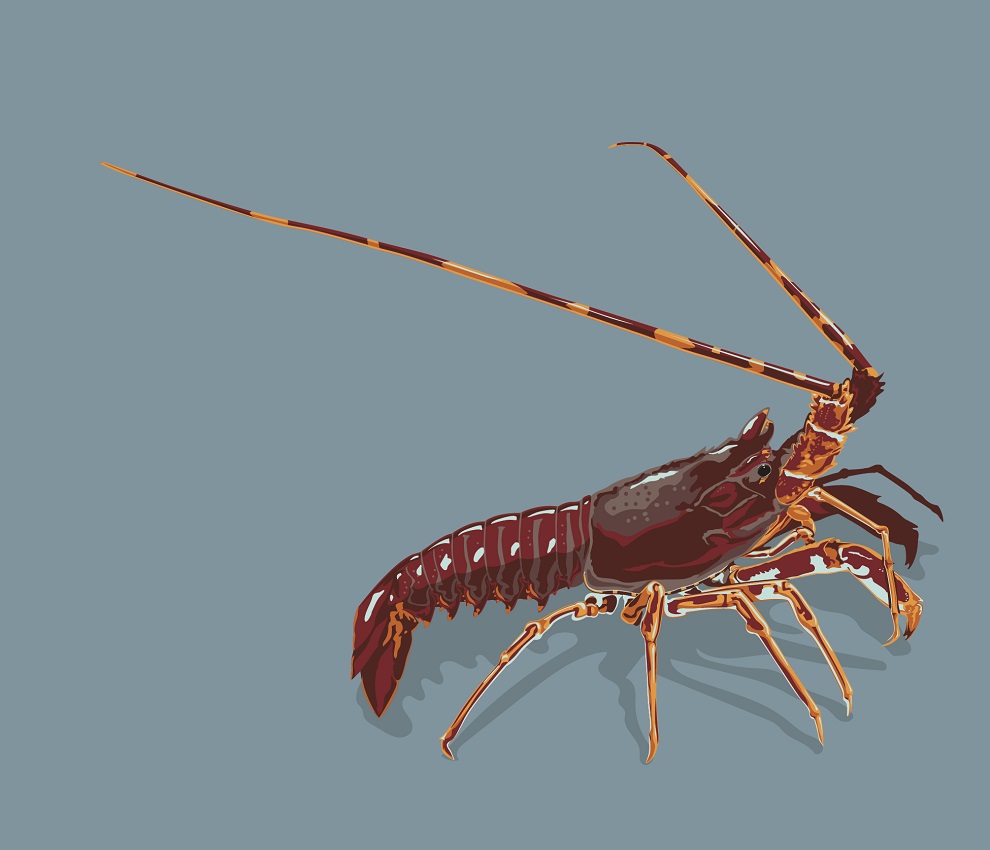 © The Pew Charitable Trusts
© The Pew Charitable TrustsWalters Shoals
The shoals are the only known home of Palinurus barbarae, a recently discovered species of giant spiny lobster.
In 1963, South African Commander Johan Walters discovered a chain of steep, flat-topped undersea mountains 700 km (over 400 miles) from the southern tip of Madagascar.21 Walters Shoals, as they were soon named, rise up from the ocean floor to 50 meters—and at one point, just 15 meters—below the ocean surface. The shoals are covered by coral reefs and are the only known home of the Palinurus barbarae, a recently discovered species of giant spiny lobster weighing about 4 kilograms (8.8 pounds) and stretching nearly half a meter. Scientists are now concerned that such an isolated species, which was first described in 2005, could be subject to overexploitation or even extinction before it can be more comprehensively studied and stocks can be appropriately managed.22
The concern is well-founded. When Commander Walters discovered the shoals, they were the reported home of a population of Galapagos sharks, now classified as near threatened by IUCN.23 Thirty to 40 percent of the fish living among the shoals are endemic to some portion of the island chain.24 The shoals are also known to be an important foraging area for leatherback turtles.
A small portion of the shoals were set aside from deep water trawling in 2006 by the Southern Indian Ocean Deepsea Fishers Association (SIODFA). This closure was one of several voluntary measures that SIODFA carried out in the Indian Ocean in conjunction with IUCN.25 But SIODFA is a private industry association; while its membership is open to all companies fishing in the deep waters of the Southern Indian Ocean, its measures are not binding on vessels and companies that choose not to participate. Thus the area remains under potential threat from fishing pressures.
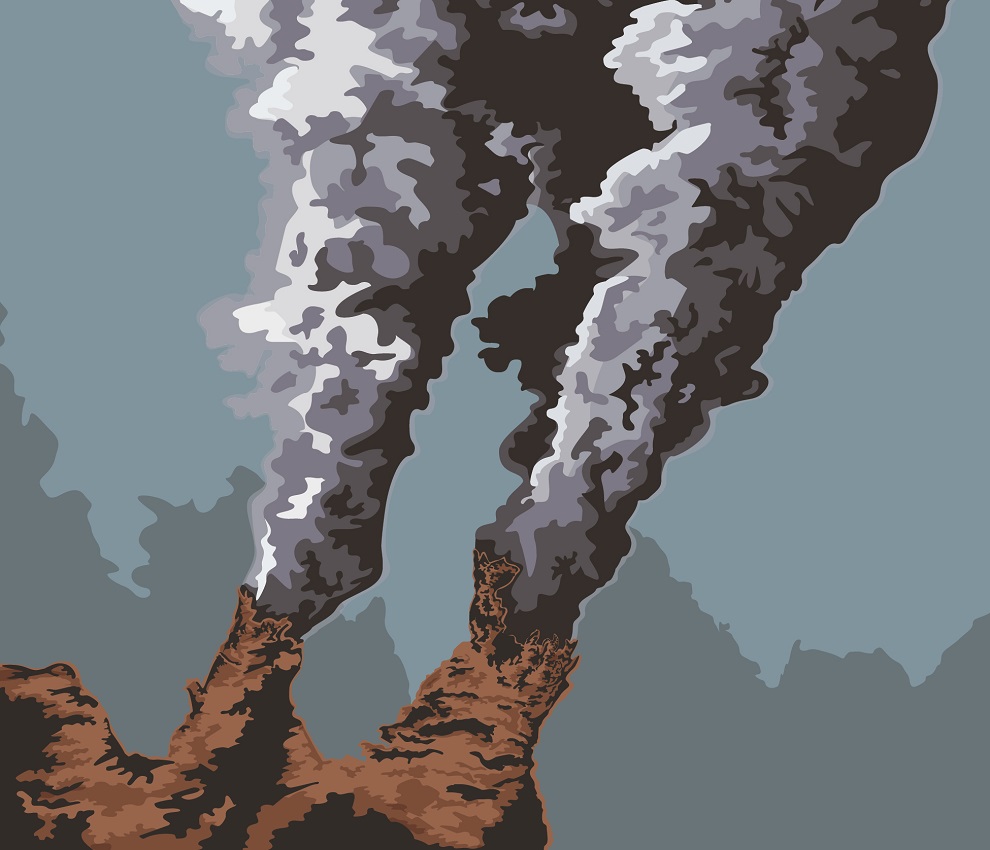 © The Pew Charitable Trusts
© The Pew Charitable TrustsAtlantic Equatorial Fracture Zone
Connecting the deep habitats of the North and South Atlantic, the seafloor here has some of the hottest hydrothermal vents.
The Atlantic Equatorial Fracture Zone extends between the Guinea Basin and Brazil, mostly in areas beyond national jurisdiction. Combining many geological, oceanographic, and biodiversity features, scientists consider this area to be highly unique.26
Connecting the deep habitats of the North and South Atlantic, this area includes both benthic (from 1,000 to 6,000 m deep) and pelagic habitats. Found on the seafloor here are some of the hottest hydrothermal vents.27 Rising 4,000 km from the seafloor, the Atlantic Equatorial Fracture Zone affects the circulation patterns in the Atlantic Ocean that influence larval dispersal, which is critical to both the benthic and pelagic habitats and to species biodiversity.
Around the St. Peter and St. Paul Archipelago, under the jurisdiction of Brazil, and elsewhere in the Atlantic Equatorial Fracture Zone are “hotspots” for different life history stages of marine organisms. The region’s seasonal phytoplankton bloom is an important source of energy for both the pelagic and benthic ecosystems.28 Pelagic fish, including yellowfin and bigeye tuna and swordfish, have been found to concentrate in the Atlantic Equatorial Fracture Zone. Leatherback and olive ridley sea turtles have also been determined to use this area as a feeding ground.
But the biodiversity is under threat, including from fishing and bycatch and the potential impacts that could occur from seabed mining in the area. Fishing near the St. Peter and St. Paul Archipelago has already led to declines in many local shark populations, including the local extinction of the Galapagos reef shark Carcharhinus galapagensis.29 The proposal for this area to be a CBD EBSA states, “The recognition of its importance seems crucial for eventual conservation initiatives in the high seas.”30
 © The Pew Charitable Trusts
© The Pew Charitable TrustsCentral Louisville Seamount Chain
A number of deepwater fish species and cold-water corals, sponges, starfish, urchins, and deep-sea species can be found in this range of 13 seamounts rising thousands of meters from the seafloor.
Extending 4,000 km east of New Zealand in international waters in the South Pacific, the Central Louisville Seamount Chain is a range of 13 seamounts rising thousands of meters from the seafloor. A number of deepwater fish species and cold-water corals, sponges, starfish, urchins, and deep-sea species can be found here. Evidence suggests that humpback whales swim along the seamounts as well. Two species of cold-water coral, Solenosmilia variabilis and Enallopsammia rostrata, help build the habitats that are the basis of complex benthic ecosystems and are considered so important that New Zealand has protected them inside its exclusive economic zone.31 While each seamount has its own unique diversity of species according to its habitats and depth, the seamounts also offer a steppingstone for species to disperse between them and expand the species distribution.32
The area is a spawning ground for orange roughy,33 which has been heavily fished in the region.34 Orange roughy are a long-lived fish species that take a long time to reach sexual maturity, making it difficult for them to recover from overfishing.35 In New Zealand, the orange roughy fishery accounted for approximately NZ$60.8 million in export value in 2008 alone, so protecting the spawning grounds is a necessary component of this important economic driver.36 Within the orange roughy fishery, many species are caught as bycatch. While the southern seamounts have been heavily fished for orange roughy, the northern seamounts have not; both areas have benthic communities that may need protections in the future.
Conclusion
The eight areas highlighted here represent only a few of the high seas EBSAs that could warrant protection, but they demonstrate the true breadth of biodiversity that exists in areas beyond national jurisdiction. As exploration of the ocean grows and new technologies are developed to facilitate use of the high seas, special places that contain unique geological features and species of critical importance should be set aside for protection as marine protected areas or reserves.
Crafting a strong international instrument that recognizes our need to protect biodiversity while balancing any economic needs will take political will. But science has shown the importance of our high seas, and protecting the global commons should be a priority for all U.N. member states as they negotiate this important new treaty.
Endnotes
- A.D. Rogers et al., “The High Seas and Us: Understanding the Value of High-Seas Ecosystems,” Global Ocean Commission (2014), http://www.globaloceancommission.org/wp-content/uploads/High-Seas-and-Us.FINAL_.FINAL_.high_.spreads.pdf.
- United Nations General Assembly, Resolution A/RES/69/292, “Development of an International Legally Binding Instrument Under the United Nations Convention on the Law of the Sea on the Conservation and Sustainable Use of Marine Biological Diversity of Areas Beyond National Jurisdiction” (June 2015), http://www.un.org/en/ga/search/view_doc.asp?symbol=A/RES/69/292.
- Linwood Pendleton et al., Assessing the Economic Contribution of Marine and Coastal Ecosystem Services in the Sargasso Sea (Durham, NC: Duke University, 2014), https://nicholasinstitute.duke.edu/sites/default/files/publications/ni_r_14-05_full_pdf.pdf.
- Ibid.
- Ibid.
- Ibid.
- Ibid.
- International Union for Conservation of Nature, “Anguilla anguilla,” The IUCN Red List of Threatened Species, accessed Nov. 23, 2015, http://www.iucnredlist.org/details/60344/0.
- Michael L. Domeier and Nicole Nasby-Lucas, “Migration Patterns of White Sharks Carcharodon carcharias Tagged at Guadalupe Island, Mexico, and Identification of an Eastern Pacific Shared Offshore Foraging Area,” Marine Ecology Progress Series 370: 221–237 (2008). doi:10.3354/meps07628.
- Salvador J. Jorgensen et al., “Eating or Meeting? Cluster Analysis Reveals Intricacies of White Shark (Carcharodon carcharias) Migration and Offshore Behavior,” PLoS ONE 7, no. 10 (2012): e47819, http://journals.plos.org/plosone/article?id=10.1371/journal.pone.0047819.
- Ibid.
- Salvador J. Jorgensen et al., “Philopatry and Migration of Pacific White Sharks,” Proceedings of the Royal Society B 277, no. 1682 (2010): 679–688, doi:10.1098/rspb.2009.1155.
- Convention on Biological Diversity, “Template for Submission of Scientific Information to Describe Ecologically or Biologically Significant Marine Areas (Costa Rica Dome),” accessed Nov. 23, 2015, https://www.cbd.int/doc/meetings/mar/ebsa-ettp-01/other/ebsa-ettp-01-costa-rica-01-en.pdf.
- Erich Hoyt, “The Blue Whale, Balaenoptera musculus, An Endangered Species Thriving on the Costa Rica Dome,” Whale and Dolphin Conservation Society, https://www.cbd.int/cms/ui/forums/attachment.aspx?id=73.
- International Union for Conservation of Nature, “Balaenoptera musculus,” The IUCN Red List of Threatened Species, accessed Nov. 23, 2015, http://www.iucnredlist.org/details/2477/0.
- Center for Ocean Solutions, Pacific Ocean Synthesis: Scientific Literature Review of Coastal and Ocean Threats, Impacts, and Solutions (Stanford University: The Woods Center for the Environment, 2009): 42, http://www.centerforoceansolutions.org/sites/default/files/publications/PacificSynthesis.pdf.
- Convention on Biological Diversity, “Description of Area Meeting CBD’s EBSA Criteria in the Eastern Tropical and Temperate Pacific Region (Area: Sala y Gómez and Nazca Ridges),” accessed Nov. 23, 2015, https://www.cbd.int/doc/meetings/mar/ebsa-ettp-01/other/ebsa-ettp-01-wwfchile-02-en.pdf.
- National Science Foundation, “New Map Uncovers Thousands of Unseen Seamounts on Ocean Floor,” Oct. 2, 2014, http://www.nsf.gov/news/news_summ.jsp?cntn_id=132771.
- Secretariat of the Convention on Biological Diversity, “Ecologically or Biologically Significant Marine Areas (EBSAs): Western South Pacific Region” (2014), https://www.cbd.int/marine/ebsa/booklet-01-wsp-en.pdf.
- BirdLife International, “Important Bird and Biodiversity Area Fact Sheet: Clipperton Fracture Zone Petrel Foraging Area,” accessed Nov. 23, 2015, http://www.birdlife.org/datazone/sitefactsheet.php?id=31490.
- Clearing-House Mechanism of the Convention on Biological Diversity, “Ecologically or Biologically Significant Areas (EBSAs): Walters Shoals,” accessed Dec. 11, 2015, https://chm.cbd.int/database/record?documentID=204007.
- Census of Marine Life, “New Species: Giant Spiny Lobster,” accessed Nov. 24, 2015, http://www.coml.org/discoveries/discoveries/new_species/spiny.htm.
- International Union for Conservation of Nature, “Carcharhinus galapagensis,” The IUCN Red List of Threatened Species, accessed Nov. 24, 2015, http://www.iucnredlist.org/details/41736/0.
- Clearing-House Mechanism of the Convention on Biological Diversity, “Ecologically or Biologically Significant Areas (EBSAs): Walters Shoals.”
- Food and Agriculture Organization of the United Nations, “Management of Demersal Fisheries Resources of the Southern Indian Ocean,” FAO Fisheries Circular No. 1020 (2006): 88, http://www.fao.org/3/a-a0726e.pdf.
- Jose Angel Alvarez Perez et al., “Atlantic Equatorial Fracture Zone and High Productivity System,” CBD EBSA Proposal, https://www.cbd.int/doc/meetings/mar/rwebsa-wcar-01/other/rwebsa-wcar-01-brazil-11-en.pdf.
- C.W. Devey, K.S. Lackschewitz, and E.T. Baker, “Hydrothermal and Volcanic Activity Found on the Southern Mid-Atlantic Ridge,” EOS 86, no. 22 (2005): 209–212, http://onlinelibrary.wiley.com/doi/10.1029/2005EO220001/abstract.
- Alan Longhurst, “Seasonal Cooling and Blooming in Tropical Oceans,” Deep Sea Research Part 1: Oceanographic Research Papers 40, no. 11–12 (1993): 2145–2165, doi:10.1016/0967-0637(93)90095-K.
- Osmar J. Luiz and Alasdair J. Edwards, “Extinction of a Shark Population in the Archipelago of St. Paul’s Rocks (Equatorial Atlantic) Inferred From the Historical Record,” Biological Conservation 144, no. 12 (2011): 2873–2881, doi:10.1016/j.biocon.2011.08.004.
- Jose Angel Alvarez Perez et al., “Atlantic Equatorial Fracture Zone and High Productivity System.”
- Owen Anderson et al., “Refined Habitat Suitability Modelling for Protected Coral Species in the New Zealand EEZ,” NIWA (December 2014): 13, http://www.doc.govt.nz/Documents/conservation/marine-and-coastal/marine-conservation-services/reports/protected-coral-distribution-modelling-final-report.pdf.
- Ashley A. Rowden et al., “Paradigms in Seamount Ecology: Fact, Fiction, and Future,” Marine Ecology 31, no. s1 (2010): 226–241, doi:10.1111/ j.1439-0485.2010.00400.x.
- International Union for Conservation of Nature, “Identifying Ecologically and Biologically Significant Areas on Seamounts” (2011), http://www.marine-conservation.org/media/filer_public/2013/03/21/dunstan_etal_2011.pdf.
- Secretariat of the Convention on Biological Diversity, “Ecologically or Biologically Significant Marine Areas (EBSAs): Western South Pacific Region.”
- G.E. Fenton, S.A. Short, and D.A. Ritz, “Age Determination of Orange Roughy, Hoplostethus atlanticus (Pisces: Trachichthyidae), Using 210Pb:226Ra Disequilibria,” Marine Biology 109, no. 2 (1991): 197–202, http://link.springer.com/article/10.1007/BF01319387.
- Ministry for Primary Industries, “Fishery—Orange Roughy,” NZ Fisheries InfoSite, accessed Dec. 21, 2015, http://fs.fish.govt.nz/Page.aspx?pk=5&tk=1&fpid=15.


This video is hosted by YouTube. In order to view it, you must consent to the use of “Marketing Cookies” by updating your preferences in the Cookie Settings link below. View on YouTube
This video is hosted by YouTube. In order to view it, you must consent to the use of “Marketing Cookies” by updating your preferences in the Cookie Settings link below. View on YouTube







